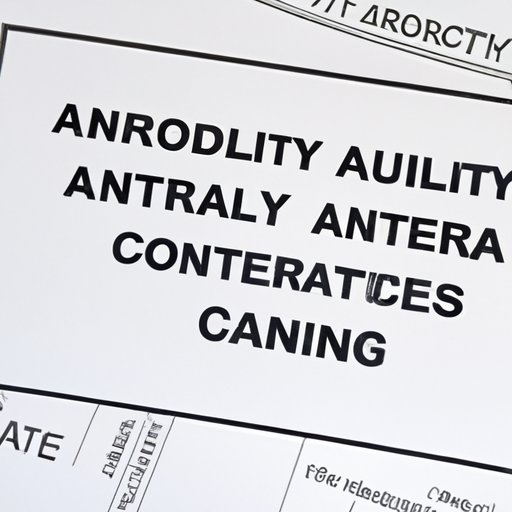I. Introduction
A Certificate of Analysis (CoA) is an essential document for any product that is sold to consumers. It provides critical information about the quality and safety of the product. In this article, we will explore what a CoA is, how to read and interpret it, how it differs from other similar documentation, and much more. This article is intended for business owners, product manufacturers, and anyone who wants to know more about what goes into their products.
II. What is a CoA?
A Certificate of Analysis (CoA) is a document issued by a quality control laboratory that verifies a product’s quality and safety. It contains information about the product’s composition, potency, purity, and other essential characteristics. CoAs are commonly found in the pharmaceutical, food and beverage, and chemical industries. They are crucial in ensuring that the product meets specific regulatory standards and is safe to consume or use.
III. How to Read and Interpret a CoA
When reading a CoA, it is essential to understand the various sections and the information they contain. A typical CoA contains the following sections:
- Product Information: Contains details like product name, lot number, and manufacturing date.
- Test Results: The actual results of testing conducted on the product.
- Acceptance Criteria: The standards that the product is expected to meet, as well as the test methods used.
- Signature and Seal: The signature of the quality control officer and the company’s seal, signifying its authenticity.
Key information to look for when reading a CoA includes the product’s identity, purity, potency, and safety. It is also important to ensure that the CoA matches the product batch number and manufacturing date. In industries such as pharmaceuticals, the interpretation of test results is critical and can impact a product’s safety. Thus, understanding CoAs is vital, especially within industries that need stringent quality control protocols.
IV. CoA vs. Other Similar Documentation
CoA, Material Safety Data Sheet (MSDS), and Certificate of Compliance (COC) are three key documents used in various industries. While each has its unique purpose, they serve to ensure that the product meets specific regulatory standards.
MSDS provides critical information about the potential hazards and handling of chemicals. It is used primarily in the chemical industry to ensure proper handling, storage, and disposal of chemicals. A COC ensures compliance with industry standards and certifies that the product meets specific regulations. It is common in industries, such as plastics and electronics.
CoA differs from MSDS and COC as it focuses on the product’s quality and safety. CoA provides detailed information about a product’s characteristics and confirms that it meets specific quality standards set by regulatory bodies. MSDS and COC provide information on the handling, disposal, and compliance with the production process and environmental regulations.
V. How to Create a CoA for a Product
Creating an accurate and thorough CoA is crucial, as it ensures that the product meets specific quality and safety standards. The following are the steps for creating a CoA:
- Determine the product’s characteristics and the regulatory standards it must meet.
- Choose an accredited laboratory to perform the necessary testing on the product.
- Establish the test methods and acceptance criteria that need to be met.
- Perform the testing on the product.
- Collect the results and generate a CoA with the appropriate signatures and seals.
A company’s failure to provide a CoA can result in legal disputes, product recalls, and damage to the company’s reputation. Ensuring that the CoA is correct and accurate can mitigate the risk of such outcomes.
VI. Common Misconceptions and Myths About CoAs
One common misconception about CoAs is that they are necessary for all products and industries. While it is true that they are essential in industries such as pharmaceuticals and food and beverages, they are not required for all products. However, CoAs can provide valuable information about a product’s quality and safety and are beneficial in industries that require quality assurance protocols.
It is also important to note that fake or incorrect CoAs can exist, which can lead to severe consequences. A false CoA can be the result of fraudulent activity or a mistake made by the quality control laboratory. As such, it is crucial to know how to spot a false CoA and avoid relying on one to make decisions.
VII. Conclusion
CoAs play a crucial role in product quality and safety. Understanding how to read and interpret the information contained within a CoA is essential. CoAs differ from other similar documentation documents but serve a similar purpose in ensuring that the product meets regulatory standards. Creating an accurate CoA is necessary for product standards and compliance and can evade legal disputes. Finally, it is essential to identify potential myths and misconceptions about CoAs to make sound decisions based on genuine and accurate information.
